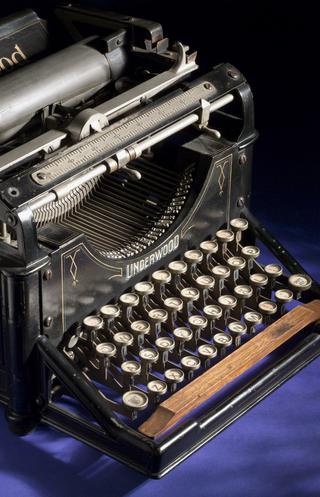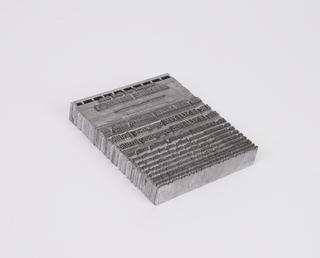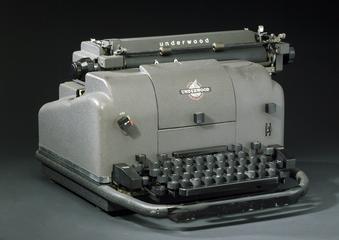
Mignon typewriter

Mignon typewriter, model 2, c. 1905. The principle of the Mignon is very simple. It combines a typesleeve with a complete character set, and an index card with pointer and two (later three) keys. Point the pointer at a letter on the index and strike the key to print a letter on the paper and advance the carriage. With minor practice the operator could reach a typing speed of at least 100 strokes per minute. Both the index card and typesleeve could be replaced to change fonts and use character sets for different languages.
The Mignon index typewriter is considered the model index typewriter, first appearing on the market in 1905 (Mignon 1) with a later model (Mignon 2) being made from around 1905 until 1913; “clones” or copies of the Model 2 appeared after German industrial patent rights were cancelled as a clause of the 1918 Versailles Treaty after the Second World War (Science Museum Group object number 1924-30). Other models of Mignon index typewriters continued to be made until 1934. The Mignon combined the simplicity of more primitive index machines with the sturdiness of a well-produced office machine and was a practical alternative to the more expensive keyboard typewriters in the early twentieth century. This Mignon Model 2 typewriter was imported into the UK by the Electrical Company Ltd, London.




